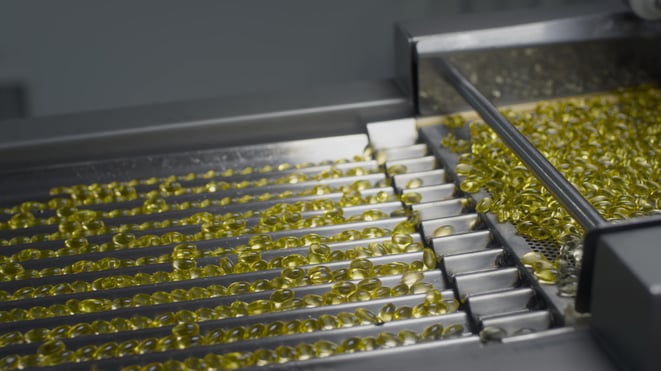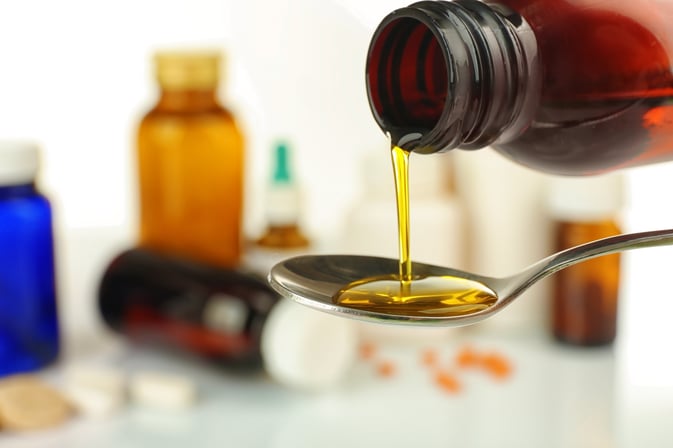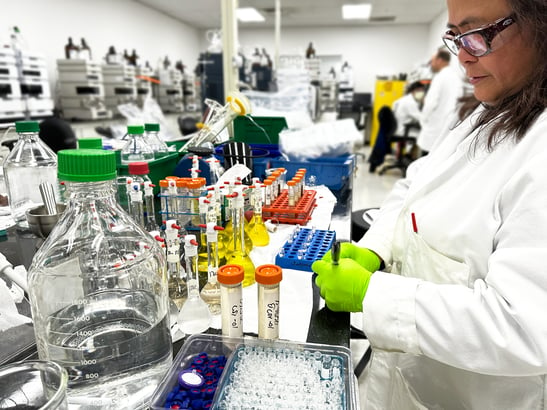Reviewed and Approved by Dean Cirotta, President, EAS Consulting Group
1-Minute Summary
- Own Label Distributors (OLD) and Private Label Distributors (PLD) are responsible for ensuring cGMP compliance across all production phases, including if outsourcing work to Contract Manufacturing Organizations (CMOs).
- Qualifying CMOs may involve issuing a cGMP Compliance Questionnaire, conducting an initial and periodic audit, and qualifying Certificate of Analysis (COA) data via accredited laboratory testing.
- Establishing a Quality Agreement with CMOs is recommended, detailing responsibilities, document sharing, product release, deviation handling, and regulatory inspection notifications.
- Your Quality Unit's responsibilities include establishing SOPs, approving documents, maintaining manufacturing records, final product release, and monitoring CMOs.
- For product release and distribution, the OLD/PLD must ensure proper COA documentation, review approval checklists, issue formal release documents, and maintain detailed distribution records for traceability.
How to Ensure You are in Compliance with U.S. FDA Regulations
Own Label Distributors (OLD) or Private Label Distributors (PLD) in the dietary supplement or over-the-counter (OTC) drug industries sometimes have questions about their responsibilities in relation to current Good Manufacturing Practices mandated in U.S. FDA regulations. Often, they erroneously think that GMP responsibilities fall on the Contract Manufacturing Organization (CMO) alone and that they bear no responsibility for meeting current Good Manufacturing Practices (cGMPs).
However, that’s not the case. In this article, we explain the responsibilities of Own Label Distributors and Private Label Distributors in the supplement and OTC industries with respect to FDA regulatory requirements.
You can also view this information in this webinar from our regulatory consulting arm, EAS Consulting Group.

Am I an Own Label Distributor or Private Label Distributor?
First, determine if your organization qualifies as an Own Label Distributor or Private Label Distributor in the eyes of the U.S. FDA.
You are an Own Label Distributor or Private Label Distributor if you contract out some or all the following activities:
- Manufacturing
- Packaging and/or labeling (co-packer)
- Laboratory testing
- Warehousing and distribution (3PL)
The organizations with whom you contract for these services are referred to as Contract Manufacturing Organizations (CMO) or Contract Service Providers.
Your Firm has “Ultimate Responsibility” to Ensure cGMP Compliance
As mentioned, OLDs or PLDs sometimes think that cGMP compliance falls on their Contract Manufacturing Organizations. However, this is not true!
To illustrate, let’s look at just two examples of comments issued by the U.S. FDA in warning letters to supplement and OTC manufacturers for a failure to ensure cGMP compliance.
FDA Warning Letter Comments to Own Label Distributors
- “Your firm has ultimate responsibility to ensure that all phases of the production of those products are in compliance with cGMP requirements.”
- “Although your firm may contract out certain manufacturing operations, it cannot contract out its ultimate responsibility to ensure that the dietary supplement is not adulterated for failure to comply with dietary supplement cGMP requirements.”
The FDA makes it clear – your organization is ultimately responsible for ensuring adherence to cGMPs and you cannot pass that responsibility off to your CMOs.
How Do I Meet My cGMP Responsibilities?
Now that we’ve established that your organization bears ultimate responsibility for adhering to cGMPs, let’s look at how that’s done. Compliance falls into four categories:
- Qualify the CMO.
- Establish a Quality Agreement (not a regulatory requirement, but highly recommended).
- Meet Quality Unit responsibilities.
- Establish a monitoring process for your CMOs.
Let’s look at each area in detail.
How to Qualify Your CMOs
The following are options for qualifying your CMO. Many companies use different combinations as not all are required for every qualification. However, it provides a good starting point for your qualification process.
- Issue a cGMP Compliance Questionnaire to each CMO.
- Conduct an initial cGMP compliance audit by your own Quality Unit or a third-party auditing company.
- Qualify the Certificate of Analysis (COA) data via testing using an ISO 17025-accredited laboratory with proper methods for supplements or OTC drug products.
- Periodically requalify the COA data.
- Throughout the process, assign these statuses to your CMOs: Qualified, Conditionally Qualified, Disqualified, Re-Qualified.

How to Establish a Quality Agreement with Your CMOs
While the FDA does not require a Quality Agreement with your CMOs, they often ask about it during an audit and it is strongly recommended. Having a Quality Agreement on file with each CMO speaks highly to your commitment to producing safe products.
Here is a list of considerations and topics to include in your Quality Agreement. While not exhaustive, it provides a good starting point when developing your Quality Agreement:
- Can be an addendum to an existing business agreement or a standalone document.
- Include a Scope & Purpose of the Agreement.
- Include terms of the Agreement, such as effective date and termination date.
- Include confidentiality and non-disclosure requirements for both parties.
- Indicate responsibilities of the Own Label Distributor/Private Label Distributor, the CMO, and any shared responsibilities between your organization and the CMO. It’s best to include a table that clearly spells out the responsibilities of each party and the shared responsibilities.
- Adhere to Quality Unit responsibilities outlined in 21 CFR 111 (supplements) or 21 CFR 211 (OTC products).
- Outline who is responsible for document approvals and what documents are to be shared.
- Define how product release is handled.
- Define how deviations and out-of-specification (OOS) results should be handled and communicated.
- Provide access to facilities for observation or audits.
- Require the CMO to notify your Quality Unit of regulatory inspections, observances, and responses.
How Do I Meet Quality Unit Responsibilities?
Understanding the precise responsibilities of your Quality Unit or Quality Assurance Team is vital to meeting your regulatory requirements. Some organizations struggle to identify the responsibilities of their Quality Unit, so let’s break it down.
- First and foremost, establish a Quality Unit comprised of qualified and trained personnel. Depending on the size of your organization, it can be as small as one person, but you must establish a Quality Unit to meet regulatory requirements.
- Document the Quality Unit’s responsibilities, as mandated in 21 CFR 111, subpart F (supplement manufacturers) or 21 CFR 211.22 (OTC manufacturers).
- Approve all cGMP-related documents, such as your organization’s SOPs; product specifications; and product formulations.
- Maintenance of Master Manufacturing Records.
- Final release of product for distribution.
- Expiry/Best-Use date interval determination.
- Material reviews/non-conformance investigations.
- Change control procedures.
- Product complaint investigations and final reports.
- Maintenance of evidence of QU review and approval of all required documentation.
- Maintenance of product distribution records.
- Maintenance of records related to CMO monitoring and review.
- Quality Agreement approval.
How to Establish a Training Program for Your Quality Unit
Given the sheer volume and importance of the work assigned to your Quality Unit, it’s recommended that you develop a training program for your team. This will help ensure smooth onboarding for new hires while reinforcing key concepts and strengthening the performance of your Quality Unit.
Here are a few important considerations when developing training:
- Create a “Training Requirements” matrix that shows the required training for each job category.
- Include cGMP and SOP training.
- Create job skills training appropriate for the different job categories at your organization (e.g. packaging, warehousing, laboratory, distribution, etc.).
- Maintain a file of all training records.

How to Develop SOPs
Everyone in the industry, whether supplements or OTC, knows the importance of having Standard Operating Procedures (SOPs) for your organization. Here are a few important points to keep in mind when developing your SOPs:
- Cover all appropriate cGMP compliance requirements in the relevant regulations (21 CFR 111 for supplements or 21 CFR 211 for OTC products).
- Your SOPs should apply at the product owner/corporate level, meaning they cover your requirements, not your CMO’s requirements.
- Document Quality Unit approval of all your SOPs.
- At minimum, include all the topics covered in this article.
- Avoid writing your SOPs as policy documents; instead, think of them as documents that explain how to carry out a task, which allows them to serve as training documents.
How to Develop Product Specifications
Developing product specifications is always a hot topic and continues to be the top FDA observance cited during an audit in the supplements industry. While an exhaustive explanation of how to create product specifications lies outside the scope of this article, we can point out a few important points to consider that will help ensure regulatory compliance.
The first point is to distinguish between the product specifications for which the Own Label Distributor/Private Label Distributor is responsible and those for which the CMO is responsible.
Product Specifications Created by the OLD/PLD and Approved by Your Quality Unit
- Ingredients unique to the OLD’s or PLD’s product.
- Product (bulk and packaged) and labels.
- Primary packaging material unique to the OLD or PLD.
- Specifications are provided to the CMO.
Product Specifications Created by the CMO
- Ingredients commonly in the CMO’s inventory.
- Finished product specifications.
- Packaging materials commonly in the CMO's inventory.
- Specifications approved by the CMO’s Quality Unit with evidence that your Quality Unit has also reviewed and approved them.
How to Develop Master Manufacturing Records
Master Manufacturing Records must be established for every product formulation and batch size. So, if you have different batch sizes for the same product formulation, you need to have an MMR for each. This is an important point that is easy to overlook.
- The MMR must identify each ingredient in the formulation by name and item number.
- All key processing steps and in-process specifications must be described, including fields to indicate that someone has performed each step and that someone else has verified each critical step.
- The MMR must define yields at key process points with an allowable range.
- The MMR should be co-approved by your organization and the CMO’s Quality Unit. Maintain copies of MMRs at your corporate headquarters.
How to Develop Batch Production Records
Individual Batch Production Records naturally follow from your MMRs. Here are some key points regarding their creation and maintenance.
- Must be a true replica of the Master Manufacturing Record. This is often cited by the FDA during an audit. The problem sometimes arises when an organization develops two databases – one for MMRs and one for Batch Production Records. Over time, changes to one database are not reflected in the other, leading to conflicts and potential audit observances.
- Double-verify all process steps, similar to your MMR.
- Add entries in real time, not before or after an operation. Entering information after the operation is considered falsification of records, which is a criminal offense.
- Yields at key process points are required and must meet allowable ranges.

Expiration Dates Must be Supported by Stability Testing
As a reminder, if your product includes an expiration date on the label, which is a regulatory requirement for OTC products and a common practice for supplements, regulations require scientific data in the form of stability testing to support that date.
The protocol varies depending on your product.
How to Conduct a Material Review/Non-Conformance Investigation
This activity is typically referred to as a “Material Review” in the supplements industry and a “Non-Conformance Investigation” in the OTC industry. Here are a few key points to consider.
- Typically performed by the CMO.
- A formal investigation must be undertaken, and a final report issued.
- Include a copy in the batch folder.
- Required for out-of-specification (OOS) lab results, confirmed product non-conformance, deviation from the Batch Production Record, unusual event, calibration issue, and returned product.
- Report requires approval from the CMO’s Quality Unit.
- The OLD/PLD Quality Unit must be notified and copied.
What is Required to Ship Finished Product from the CMO to the Product Owner or Distributor?
So, the product is now manufactured and packaged. What is required to approve the product for shipment from the CMO to your organization or your distributor?
- All in-process and finished product specifications must be met.
- Should not be shipped in Quarantine status.
- The OLD/PLD can delegate approval authority to the CMO. However, this authority only allows the CMO to ship either to the OLD/PLD or to the approved distributor.
- A final batch folder QA Approval Checklist must be sent to the product owner’s Quality Unit and the distributor.
- The COA must be sent to the product owner’s Quality Unit and the distributor.
- A copy of the COA and batch folder QA Approval Checklist must be maintained by the product owner’s Quality Unit.
What is Required to Release the Product for Distribution?
This is a vital requirement that Own Label Distributors/Private Label Distributors sometimes misunderstand.
Remember this key point: The OLD/PLD must be the sole approver of each product lot for distribution to customers for sale. This task cannot be delegated.
At minimum, approval for distribution must be based on the following:
- Properly documented COA from the contract manufacturer.
- Approved batch folder QA Approval Checklist from the contract manufacturer or equivalent – merely relying on an approved COA is insufficient.
- Approved Product Receipt Acceptance Document created by the OLD/PLD Quality Unit or from the distributor.
- It’s recommended that you compare the received product to a product standard. For example, if you’ve received a white tablet but the product should be a brown tablet, that necessitates further action before product release.
- Must issue a formal release document from the OLD/PLD Quality Unit. A phone call, email, text, or similar communication is insufficient.
- Must maintain distribution records that include information required for traceability, including product name, item number, lot number, quantity of each lot distributed, and name & address of the customer.

What are the Requirements for Reserve Product Samples?
Regulations require you to reserve product samples for supplements and OTC drug products. In addition, OTC manufacturers must reserve active pharmaceutical ingredient (API) samples. Here are the requirements:
Reserve Product Samples
- Maintained by both the CMO and product owner.
- Stored in conditions that are consistent with the product label recommendations.
- Stored in the same container/closure system used for distributed products.
- Retained one year past the shelf-life or expiration date. If it’s a supplement without an expiration date, it must be retained for two years from the date of distribution of the last batch associated with the reserve sample.
Reserve API Samples
- Retained by the CMO one year past the expiration date of the last lot of OTC drug product associated with the reserve sample.
What are the Requirements for Monitoring CMOs?
The important task of monitoring your contract manufacturing organizations (CMOs) largely falls upon the Own Label Distributor or Private Label Distributor’s Quality Unit. Sometimes, Operations may be involved as needed.
This process at minimum should include…
- Maintaining copies of all product specifications.
- Maintaining copies of all Master Manufacturing Records, Master Packaging Records, and approved formulas.
- Periodic samples of Batch Production Records and Packaging Records. A good rule of thumb is to sample N + 1 of the square root of the number of lots produced by the CMO each year. So, if they produce 100 lots a year, you would request to sample at least 11 (the square root of 100 + 1) BPRs throughout the year.
- Periodic on-site audits with audit reports.
- Evidence on file that your Quality Unit has reviewed and approved all documentation listed here.
What are the Requirements for Handling Product Complaints?
For quality and traceability purposes, you need to establish a log that tracks all product complaints regardless of source. Ensure your handling of product complaints includes the following:
- Create a Complaint Log.
- Log all complaints from any source.
- Include product name, lot number, batch code, and any other identifying information.
- Document whether the organization decided to investigate the complaint or not. In some cases, an investigation won’t be warranted, for example if someone complains about a normal product attribute like its fragrance.
- Send any complaints that may involve compliance issues regarding manufacturing, quality, or cGMPs to the Contract Manufacturing Organization or the packager for investigation.
- Set a target timeline of 30 days from completing any complaint investigation.
- Include the Contract Manufacturing Organization’s final report in your organization’s final report.
- Your Quality Unit should prepare and sign the final report.
- If a serious adverse event occurs, notify the U.S. FDA within 15 days.
What are My Responsibilities Regarding Computer Systems?
If you or your CMO/packager are using a computer system to assist with cGMP compliance, the functions within the system or the entire computer system is required to be validated or qualified. If not, you must maintain hardcopy records that support all the steps in operational procedures.
Additional Important Regulatory Requirements
Although we won’t cover the following at length in this article, it’s important to remind Quality Unit personnel in the dietary supplement industry of vital U.S. FDA regulations that must be followed to meet regulatory requirements.
Food Safety Modernization Act (FSMA) – includes 7 major rules focused on foodborne illness prevention, including…
- CGMP, Hazard Analysis & Risk Based Preventive Controls for Human Food (21 CFR 117)
- Foreign Supplier Verification Program
- Food Traceability Final Rule (for ingredients used in a dietary supplement formulation)
Note that compliance with 21 CFR 111 may exempt some parts of the above rules, but not all.
Also be aware of any U.S. FDA Import Alerts that affect any of your raw materials to prevent supply chain disruptions.
Remember, too, that during an FDA inspection, the inspector often will review your labels, website content, promotional materials, and any other marketing material. These reviews often lead to observances for product being “misbranded” or described a “new drug”. These observations occur frequently, so ensure your Quality Unit is aware of your marketing materials and reviews everything.
Know Your Quality Unit’s Responsibilities to Maintain cGMP Compliance
Remember, as the U.S. FDA notes, your Quality Unit bears the ultimate responsibility for cGMP compliance, whether you manufacture dietary supplements or OTC drug products.
If you have questions about your regulatory requirements, contact EAS Consulting Group, our regulatory consulting arm. They have several former FDA personnel on staff who can answer your questions.
Contact us if you need laboratory testing for your dietary supplements or your over-the-counter (OTC) products.
